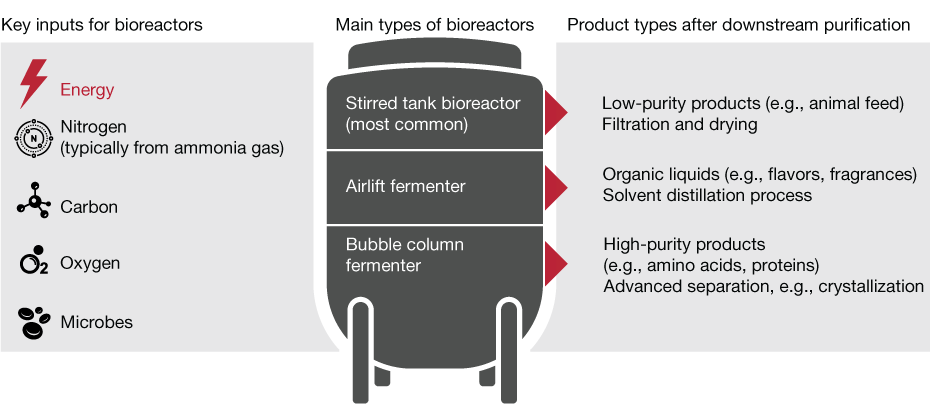{{item.title}}

Energy-to-food
We live in an era of growing concern about food insecurity and the toll that agriculture imposes on the environment, including through high greenhouse gas (GHG) emissions and excessive water use. The Middle East has an opportunity to alleviate many of these problems by pursuing a new technology called precision fermentation. There are different types of precision fermentation. Our focus in this paper is on a form of precision fermentation that converts energy and a handful of ingredients to a variety of proteins and other food ingredients with little negative environmental impact (so-called energy-to-food). Middle East countries, in particular in the GCC, have a natural advantage because of their ample, low-cost renewable energy.
Today, agriculture needs another revolution, as it is encountering the limits of what it can provide given the available resources. Agriculture needs to feed a world population that is projected to grow to 9.7 billion people by 2050, or 1.8 billion people more than today. These people will need to be fed in a sustainable manner, which requires overcoming multiple problems including scarcity of land and freshwater, GHG emissions, the high cost of nutritious food, and vulnerability to geopolitical risk and economic disruption.
The Middle East, especially the GCC, can answer this challenge, and produce healthy, low emissions foods. Energy-to-food, precision fermentation that uses energy to make food, can alleviate many of the pressures on land and freshwater, while lessening the impact on the environment. Energy-to-food is a promising technological advance that uses energy, nitrogen, carbon, oxygen and organisms (or biochemically active substances derived from such organisms) to make proteins and other food substitutes. The energy-to-food process occurs in a bioreactor, which provides the uniform environment for the energy intensive chemical reaction. The eventual gains from energy-to-food will be considerable.
“GCC countries could compete in the growing global alternative proteins market, which Credit Suisse estimates could be worth $1.4 trillion by 2050. They could also reduce food imports, which currently fill 85% of GCC domestic food needs.”
The GCC countries should engage in a bold and concerted effort to become the market leaders in energy-to-food. They need to act in six areas:
Energy-to-food precision fermentation is a consumer, commercial, investment, and scientific challenge. GCC countries in particular are well positioned to rise to this challenge, to lead a new agricultural revolution. The reward for those countries that succeed is considerable: independence from food imports, large-scale exports of an innovative product, lower emissions, and the achievement of feeding people around the world.






Menu